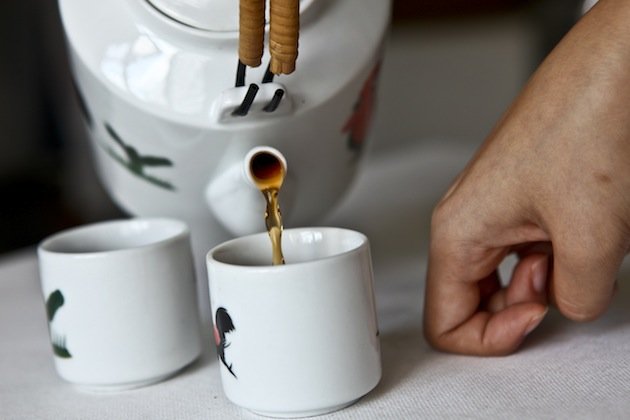
Why finger tap when tea is poured
By Sheere Ng - Thursday, Mar 21, 2013
Why do people tap their fingers on the table when the tea server fills their cups?
This gesture dates back to the Qing Dynasty (1644-1911 A.D.), during one of Qianlong emperor’s travels in Jiangnan (south of lower Yangtze River), when he had disguised himself to observe the lives of his subjects.
One day, as he was resting his feet at a teahouse, the wait staff shoved a teapot at him. He had dressed himself like a servant, while his companion, said to be a eunuch, looked as if he was the master. In order not to cause suspicion, the emperor picked up the pot to fill their cups.
The problem was, custom demanded the subjects to kowtow or at least bow to the emperor whenever he extended such benevolence. But doing so would expose their identities. It was nerve wrecking for the eunuch who was caught between being disrespectful to the emperor and sabotaging his cover, both of which were punishable by death.
In desperation, the eunuch bent his index and middle fingers, and knocked his knuckles on the table surface to signify kowtow. This practice propagated amongst the common man, and it became a silent thank you to the person who was pouring tea.

There are slight variations to the story, depending on who you speak to. Some say the emperor was engrossed in his conversation with the locals, when he realised that his teacup was empty. He instinctively, as if he had forgotten his regal stature, helped himself with the tea and even poured for the others.
The rest of the story follows the same track, except that three, instead of two, fingers are used to knock on the table – a pair to represent one’s arms, and the last one represented the head.
Or, a grateful emperor wanted to toast and offer tea to his victorious army, but was advised to knock his fingers instead when they served him, as he cannot be seen to lower himself to physically thank them at that level.
“Many customs need not have a single origin or source, but when someone tries to explain it after the custom has become ingrained in life, the more imaginative ones will outshine the others,” explains Prof Koh Khee Heong, from the department of Chinese Studies at the National University of Singapore. Today, this gesture is commonly seen at teahouses and dim sum restaurants, especially amongst the older generations. Besides finger tapping, there are other ceremonious gestures in tea drinking. For example, the host is supposed to pour until the teacup is 70 per cent full, as the rest is to be filled with friendship and affection.


